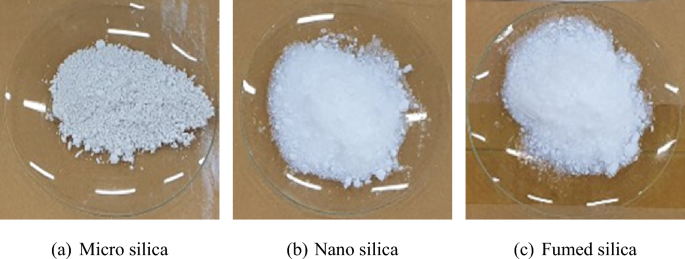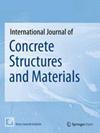纳米和微sio2材料作为胶凝复合粘结剂的力学性能和微观结构分析
IF 3.6
3区 工程技术
Q1 CONSTRUCTION & BUILDING TECHNOLOGY
International Journal of Concrete Structures and Materials
Pub Date : 2023-11-11
DOI:10.1186/s40069-023-00629-w
引用次数: 0
摘要
摘要本研究通过添加二氧化硅纳米颗粒和微颗粒来研究硅酸盐水泥(OPC)的凝结时间、力学性能和微观结构。由于纳米和微sio2的火山灰反应缩短了凝固时间,并通过降低微观结构的孔隙率提高了抗压强度。当纳米和微二氧化硅单独使用时,微二氧化硅在减少初始和最终凝结时间和提高抗压强度方面最有效。当使用两种或两种以上的纳米和微二氧化硅时,微尺寸粘结剂和少量纳米二氧化硅有效地改善了性能,凝结时间缩短到普通硅酸盐水泥(OPC)的50-52%。结果表明,少量的纳米二氧化硅可以缩短凝结时间,提高抗压强度,这主要是由于纳米二氧化硅引起了火山灰反应,并且纳米二氧化硅填充了由较大颗粒组成的硅灰与水泥之间的孔隙。这一结果也可以从抗压强度和微观结构分析中得出。与OPC相比,含有纳米和微二氧化硅的水泥浆体的强度提高了约112%。由于纳米粘合剂的比表面积大,可能导致流量减少,因此在混合物设计时需要考虑添加化学外加剂。此外,当使用纳米和微材料时,必须考虑粒度分布,因为粒度分布的不平衡会增加微观结构中的孔径。本文章由计算机程序翻译,如有差异,请以英文原文为准。

Analysis of Mechanical Properties and Microstructure of Nano- and Micro-SiO2 Materials as Cementitious Composite Binder
Abstract This study evaluated the setting time, mechanical properties and microstructure of Portland cement (OPC) by adding SiO 2 nano- and micro-particles. The setting time was reduced due to the pozzolanic reaction of the nano- and micro-SiO 2 , and the compressive strength was increased through a reduction in the porosity of the microstructure. When nano- and micro-SiO 2 were used alone, micro-silica was the most effective in reduced the initial and final setting times and developing compressive strength. When two or more nano- and micro-SiO 2 were used, a micro-sized binder and a small amount of nano-silica effectively improved performance as the setting time was reduced to 50–52% of that of ordinary Portland cement (OPC). It appears that a small amount of nano-silica could reduce the setting time and increase compressive strength because it caused the pozzolanic reaction and because the nanoparticles filled the pores between the silica fume and cement, which were composed of relatively large particles. This result could also be derived from compressive strength and microstructure analysis. Cement paste containing to nano- and micro-silica increased the strength by approximately 112% compared to OPC. Because nano-binders may cause a reduction in flow due to their large specific surface area, adding chemical admixture needs to be considered during mix design. In addition, the particle size distribution must be considered when nano- and micro-materials are used because an imbalance in particle size distribution can increase the pore size in the microstructure.
求助全文
通过发布文献求助,成功后即可免费获取论文全文。
去求助
来源期刊

International Journal of Concrete Structures and Materials
CONSTRUCTION & BUILDING TECHNOLOGY-ENGINEERING, CIVIL
CiteScore
6.30
自引率
5.90%
发文量
61
审稿时长
13 weeks
期刊介绍:
The International Journal of Concrete Structures and Materials (IJCSM) provides a forum targeted for engineers and scientists around the globe to present and discuss various topics related to concrete, concrete structures and other applied materials incorporating cement cementitious binder, and polymer or fiber in conjunction with concrete. These forums give participants an opportunity to contribute their knowledge for the advancement of society. Topics include, but are not limited to, research results on
Properties and performance of concrete and concrete structures
Advanced and improved experimental techniques
Latest modelling methods
Possible improvement and enhancement of concrete properties
Structural and microstructural characterization
Concrete applications
Fiber reinforced concrete technology
Concrete waste management.
 求助内容:
求助内容: 应助结果提醒方式:
应助结果提醒方式:


